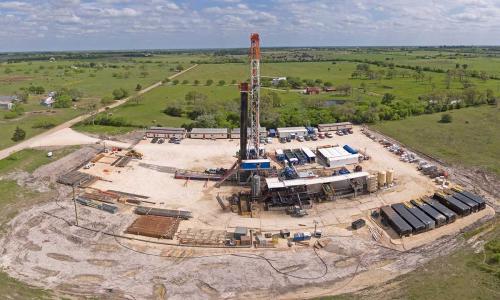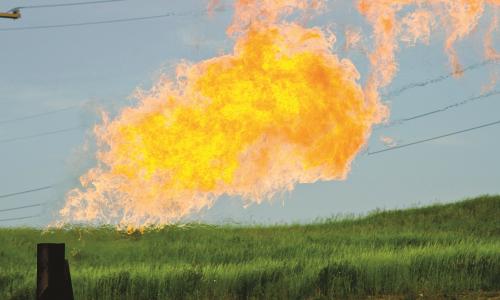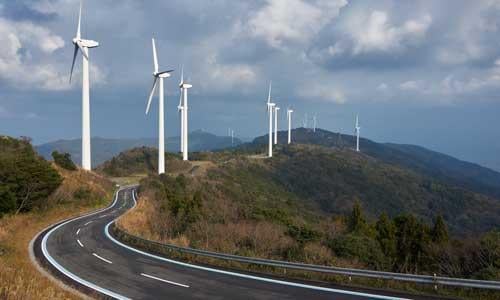Natural gas, also known as methane or just "gas," is used in heating, cooking, electricity production, transportation, and as an industrial feedstock. In 2021, it made up 32 percent of the US energy mix, and has grown since.
Because gas is a fossil fuel, like oil and coal, it releases large amounts of pollution and global warming emissions when burned (or released or leaked directly into the atmosphere), and represents a significant obstacle in the fight for lower emissions and climate justice.
You can learn more about natural gas in the following comprehensive suite of pages, which detail the many aspects of gas, from formation to extraction to end use, including associated environmental impacts.
How natural gas is formed
Methane gas is a product of decomposed organic matter, typically from ancient marine microorganisms, deposited over the past 550 million years.
After gas forms, it will tend to rise towards the surface through pore spaces in the rock. Most often, gas deposits are found in association with oil reservoirs, with the gas either mixed with the oil or buoyantly floating on top.
Environmental impacts of natural gas
Methane gas has a range of potential environmental impacts associated with its extraction, transportation, and combustion, including water use and pollution, global warming emissions, effects on land use and wildlife, and air pollution. Understanding and mitigating these impacts is crucial for responding to the climate crisis.
Shale gas and other unconventional sources of natural gas
Unconventional natural gas, which includes shale gas, tight gas, coal bed methane, and methane hydrates, has been more difficult and costly to exploit than conventional deposits—but the economics are changing. Hydraulic fracturing (or "fracking") has made some of these sources much easier to access than ever before, changing the character of energy markets and complicating our efforts to respond to climate change.
Natural gas flaring, processing, and transportation
The United States has an extensive and complex network of gas wells, processing facilities, and pipelines. In addition to safety concerns, methane leaks from wells, as well as transmission and distribution pipelines, are a significant source of global warming emissions.
Uses of natural gas
Gas is a comparatively versatile fuel that is used in a wide variety of applications, including electricity generation, heating, and industrial uses. Because of this, changes in natural gas demand in one use (say, power plants) can directly influence the price of it in other uses (home heating or industry).
The future of natural gas
There are significant environmental and public health issues associated with the extraction, production, and distribution of gas. And, while somewhat less dirty to burn than coal and oil, gas is still a fossil fuel whose emissions do contribute to global warming, and its combustion does result in health-harming pollution like nitrogen oxides (NOx). Unlike clean alternatives such as energy efficiency and renewable energy, gas is not a solution for the climate or communities.
Furthermore, methane leakage during the extraction and distribution of natural gas undermines the potential to reduce global warming emissions by using methane gas in place of higher-carbon fossil fuels such as coal and oil. And horizontal drilling and hydraulic fracturing (or “fracking”) techniques that have allowed domestic gas and oil production to expand rapidly in recent decades have introduced new concerns around the impacts that natural gas extraction and use has on climate change, public health and safety, land and water resources, and people. This expansion is currently outpacing our capacity to manage the attendant risks.
During our nation’s transition to a clean, low-carbon energy future, gas has a limited and diminishing role (PDF) to play in the electricity and transportation sectors. Clean technologies like wind, solar, and energy storage are the future.
References:
[1] Energy Information Administration. 2012. Electricity Data Browser. Net Generation for All Sectors.








